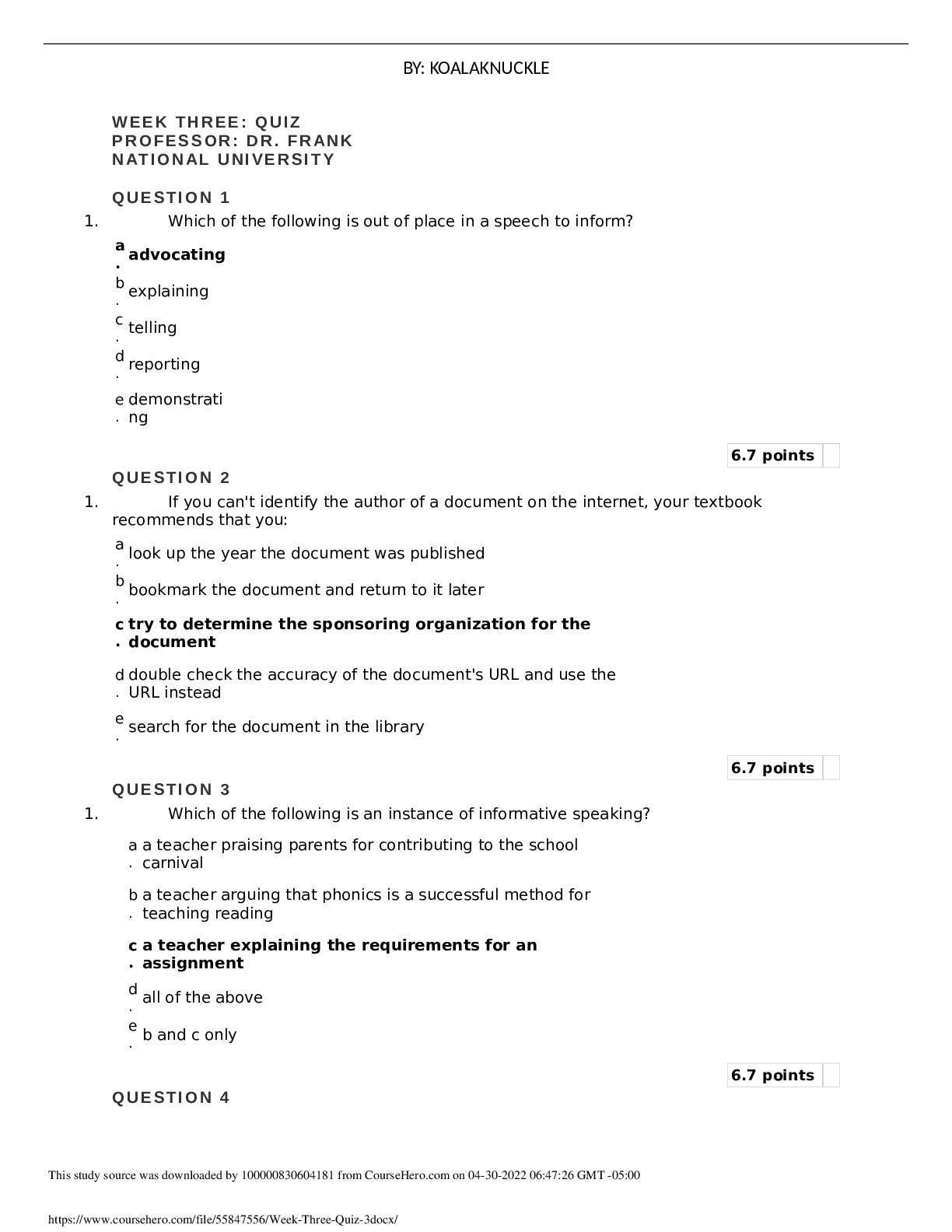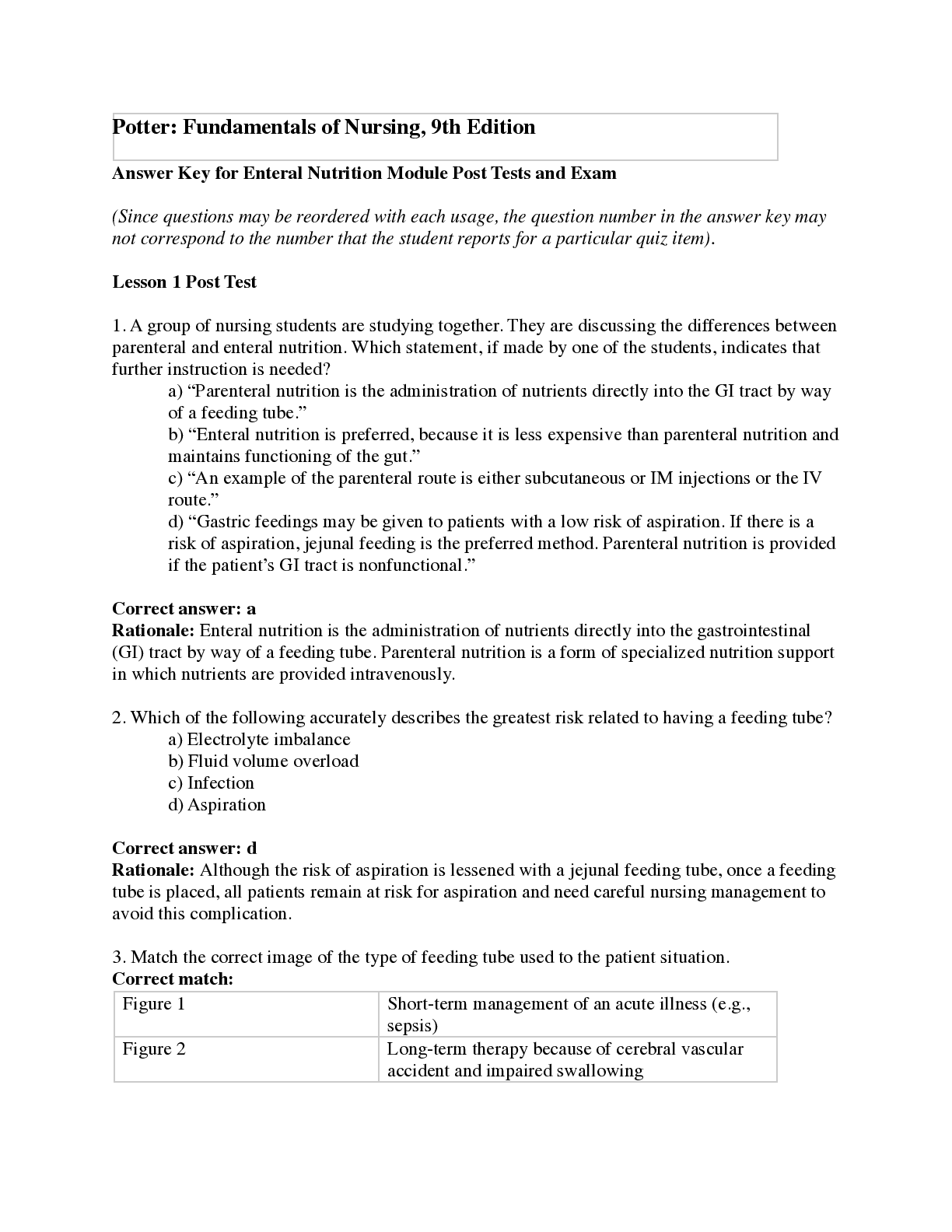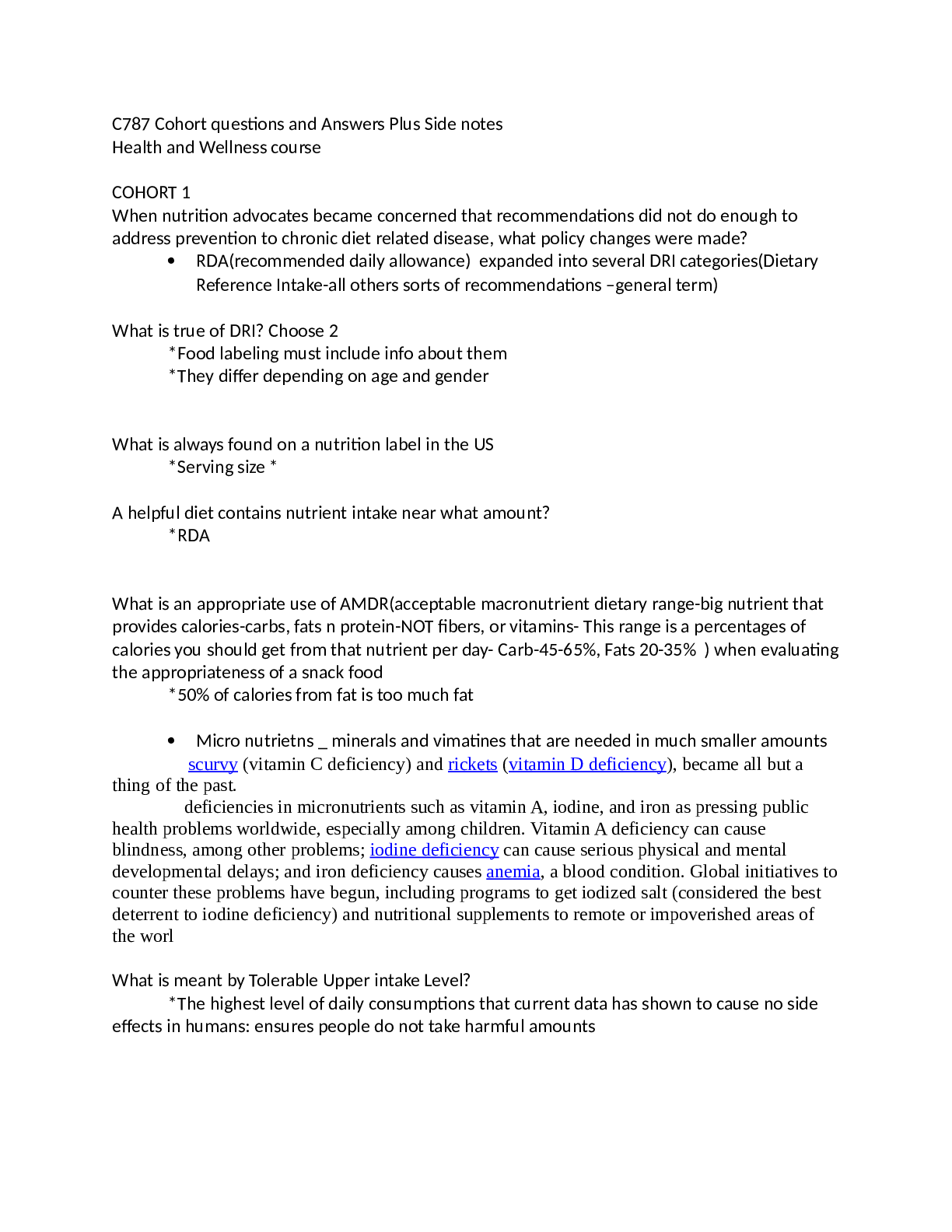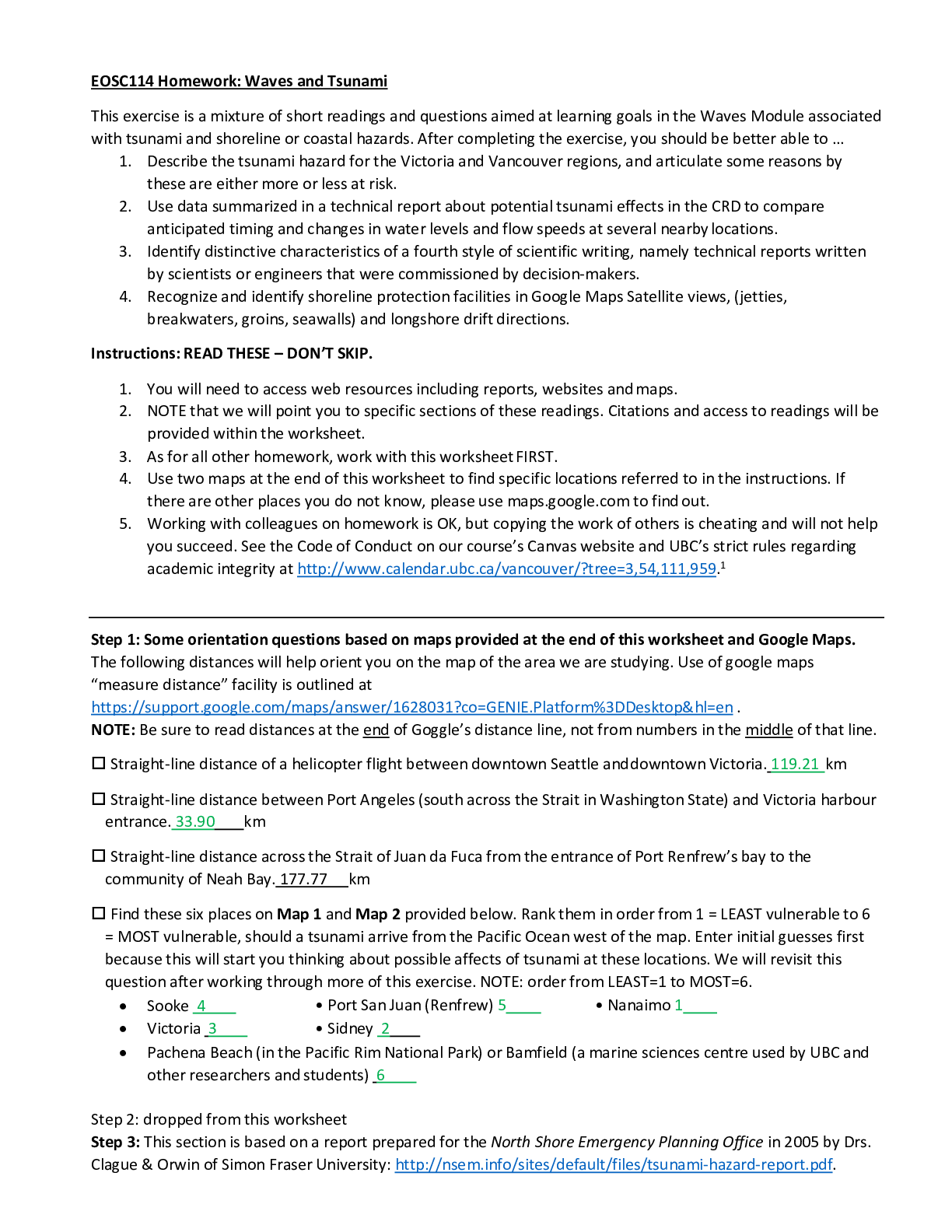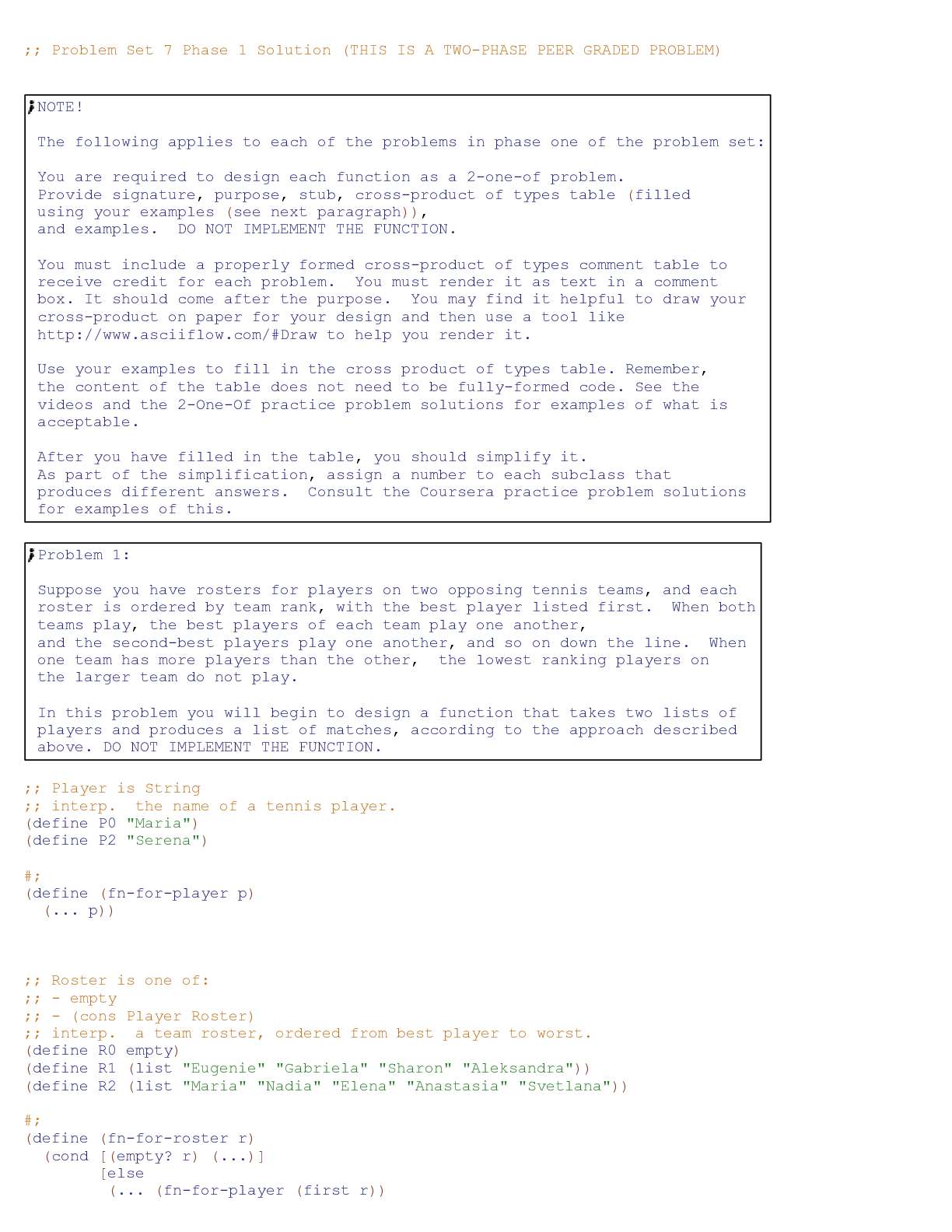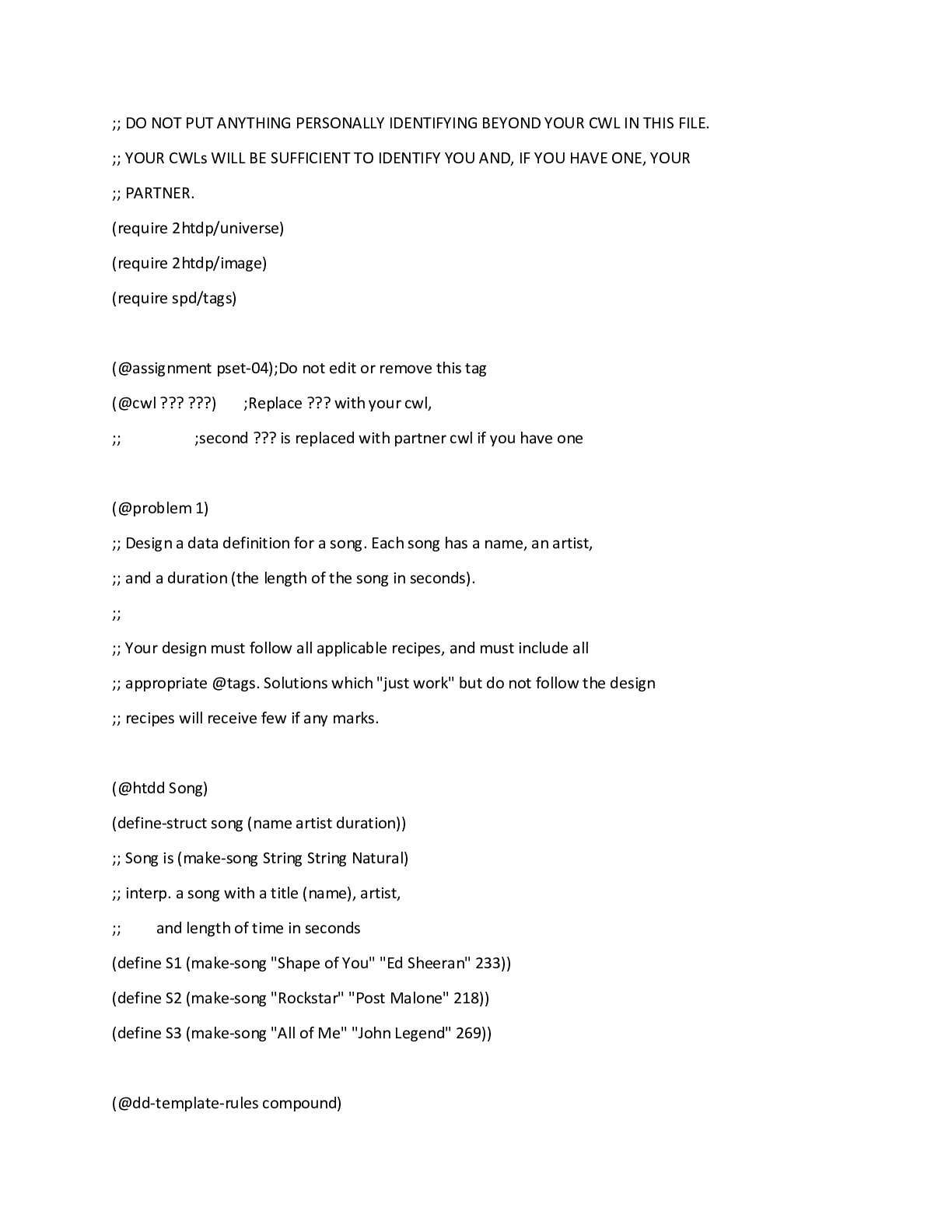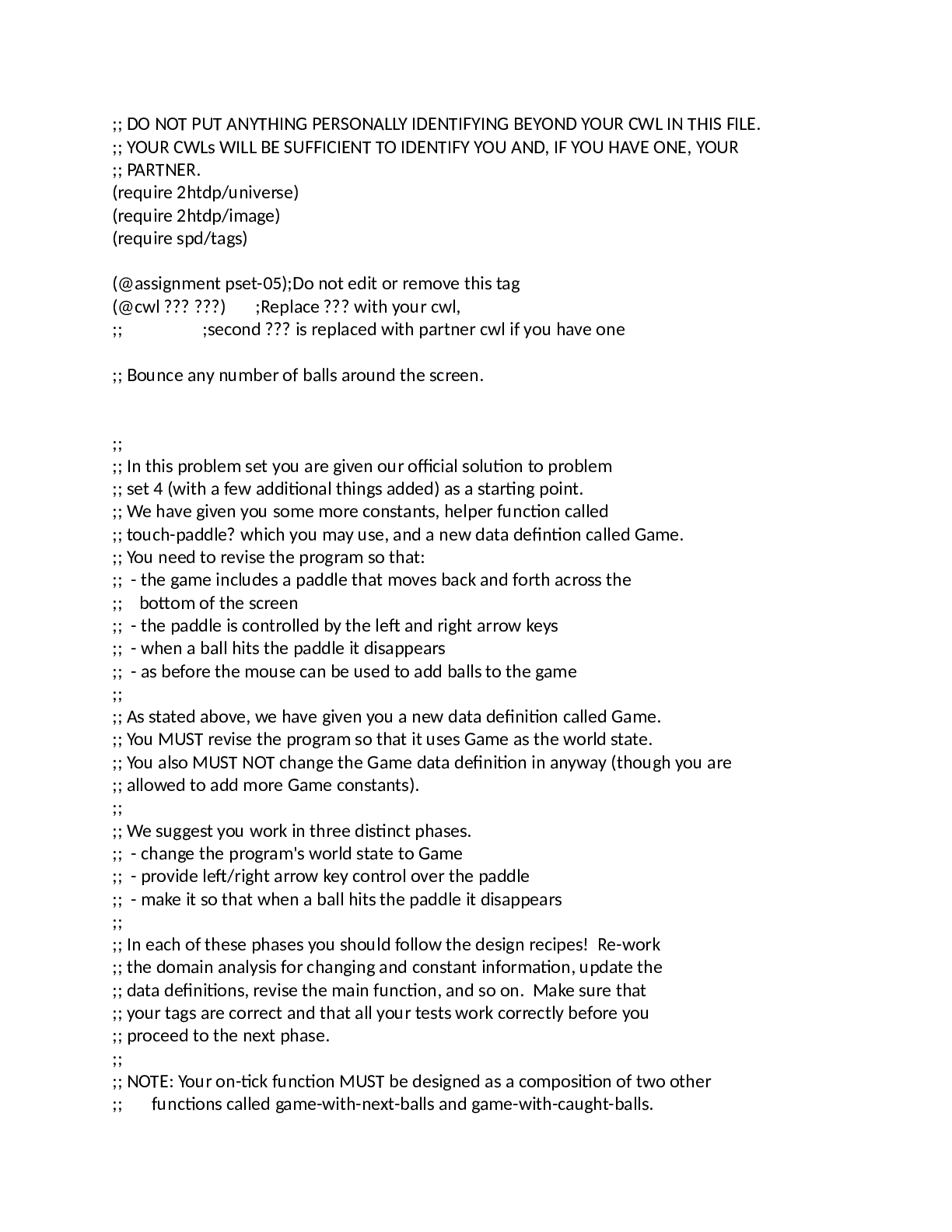Geography > QUESTIONS & ANSWERS > EOSC 114 LANDSLIDES multiply choice University of British Columbia EOSC 114 (ALL ANSWERS ARE CORRE (All)
EOSC 114 LANDSLIDES multiply choice University of British Columbia EOSC 114 (ALL ANSWERS ARE CORRECT)
Document Content and Description Below
EOSC 114 LANDSLIDES 1. Which would NOT cause a landslide? Student Response A. Adding material to the driving mass relative to the resisting mass. B. Removing material from the resisting mass re... lative to the driving mass. C. Saturating only the driving mass. D. Removing material from the resisting mass and adding the same amount of material to the driving mass. E. Adding the same amount of material to the driving mass and the resisting mass. 100% Score: 0/1 2. A landslide trigger ________. Student Response A . can be anthropogenic in origin 100% B. is the same thing as a landslide cause C. in British Columbia is commonly a very large earthquake (> M 9.0) D. rarely involves water E. is defined as the frequency a landslide occurs Score: 1/1 3. Which statement is FALSE? Student Response A. Quick clays can liquefy only after significant shaking such as during an earthquake. 100% B. The shear strength of sediments is lower than that of rocks. C. The area within and near UBC is in danger of landslides. D. Landslide velocities can range from a few millimeters/year to a few meters/second. Student Response E. Gravity is the ultimate cause of all landslides. Score: 0/1 4. With regard to landslides, shear strength is _____. Student Response A. the cohesion between grains in a rock or sediment sample B. the degree to which the surface tension of water holds material together C. a combination of all the factors causing geologic materials to resist shear stress 100% D. a combination of composition, density, and electromagnetic attraction within geologic materials E . slope steepness plus composition Score: 0/1 5. Compared to developed countries, countries in the developing world are likely to have _____ due to landslides. Student Response A . higher property damage and lower death counts B. lower property damage and higher death counts 100% C. higher property damage and higher death counts D. lower property damage and lower death counts E. about the same property damage and lower death counts Score: 0/1 6. Calculate the return period of a debris flows in British Columbia using the following data: 1930: Meager Creek/Pemberton 1957: Prince Rupert 1972: Sparwood 1990: Philpott Road in Kelowna Student Response A. 10 years Student Response B. 15 years C. 27 years D. 30 years 100% E. 60 years Score: 1/1 7. A landslide is more likely to occur when ________. Student Response A. Gp > Gt B. Gt > Gp 100% C. Gt = Gp D. (Gp + Gt) < gravity E. (Gp – Gt) < gravity Score: 1/1 8. The factor of safety is the ratio of __________. Student Response A. Gp to Gt B. shear stress to shear strength C. shear strength to shear stress 100% D. the sum of Gp and Gt to shear strength E. shear strength divided by Gp Score: 1/1 9. Which of the following factors would be MOST likely to trigger a landslide on the coast of BC? Student Response A. earthquake Student Response B. undercutting C. overloading D . heavy rainfall 100% E. removal of vegetation Score: 1/1 1 0. Which statement about flows is FALSE? Student Response A . Flows behave like fluids. B. Debris flows have higher water content than debris avalanches. C. An example of a very fast moving flow (> 75 km/hour) is rock creep. 100% D. Debris flows are common in British Columbia coastal mountains. E. Flows can have variable water content. Score: 0/1 1 1. Water in a layer of unconsolidated sediment can lead to landslides as a result of _______. Student Response A. increased cohesion B. vegetation growth C. decreased pore water pressure D . increased pore water pressure E. a decrease in the slide mass Score: 1/1 1 2. Shear strength directly depends on which of the following? Student Response A . slope composition B. slope gradient C. shear stress D. earthquake frequencies E. gravity Score: 1/1 1 3. Lion’s Bay debris retention structure is designed to ______. Student Response A . stop the water and debris in a debris flow B. stop the water in a debris flow C. slow the water in debris flow D. stop the debris in a debris flow 100% E. lower property values downslope Score: 0/1 1 4. Which factor of safety represents the most stable slope? Student Response A. 0.5 B. 1 C. 1.5 D. 2 E. 2.5 100% Score: 0/1 1 5. If a slope has a calculated factor of safety = 1.05 it means that a landslide ________. Student Response A. has already occurred B. will happen within 24 hours C. is likely to occur in the future 100% D. is highly unlikely E. will never occur Score: 1/1 1 6. Water may INCREASE the likelihood of a landslide by ___________. Student Response A. increasing cohesion between particles in unconsolidated sediment B. decreasing the weight of the resisting mass C. reducing pore pressure at the base of a potential slide mass D . causing expansion of clay minerals E. introducing cement into pore spaces between unconsolidated sediment Score: 1/1 1 7. Landslides are most likely to occur if ____. Student Response A. the factor of safety goes below 1.0 100% B. the shear stress is exceeded by the shear strength C. the water is evacuated from a slope D. the weather has been dry for an extended period of time E. vegetation is covering the slope Score: 0/1 1 8. Which is TRUE of a debris avalanche? Student Response A. Increasing the water content increases viscosity, which decreases velocity and destruction. 100%B. Increasing the water content decreases viscosity, which increases velocity and destruction. C. Increasing the water content decreases viscosity, which decreases velocity and destruction. D. Decreasing the water content decreases viscosity, which decreases velocity and destruction. E. Decreasing the water content increases viscosity, which increases velocity and destruction. Score: 0/1 1 9. Which statement is FALSE? Student Response 100%A . The 2005 La Conchita landslide was totally unexpected as the cause for previous landslides in the area had dealt with. B. A landslide trigger is the process that pushes the factor of safety to an unsafe number. C. The most common landslide trigger in western British Columbia is heavy precipitation. D. One of the underlying causes of the landslide at Frank, Alberta was coal mining. E. One hypothesis to explain how sturzstroms can flow extremely far and fast is acoustic fluidization. Score: 0/1 2 0. Which of the following is the BEST example of rapid erosion? Student Response A. debris flows occurring on steep slopes due to deforestation and removal of the protective vegetation coveB. liquefaction of a sensitive clay layer in a slope leading to its rapid failure 100%C. undercutting of a slope through water action leading to a series of retrogressing landslides D. a series of rockfalls that occur due to changes in weather in winter and spring E. wave action on highly res [Show More]
Last updated: 1 year ago
Preview 1 out of 36 pages
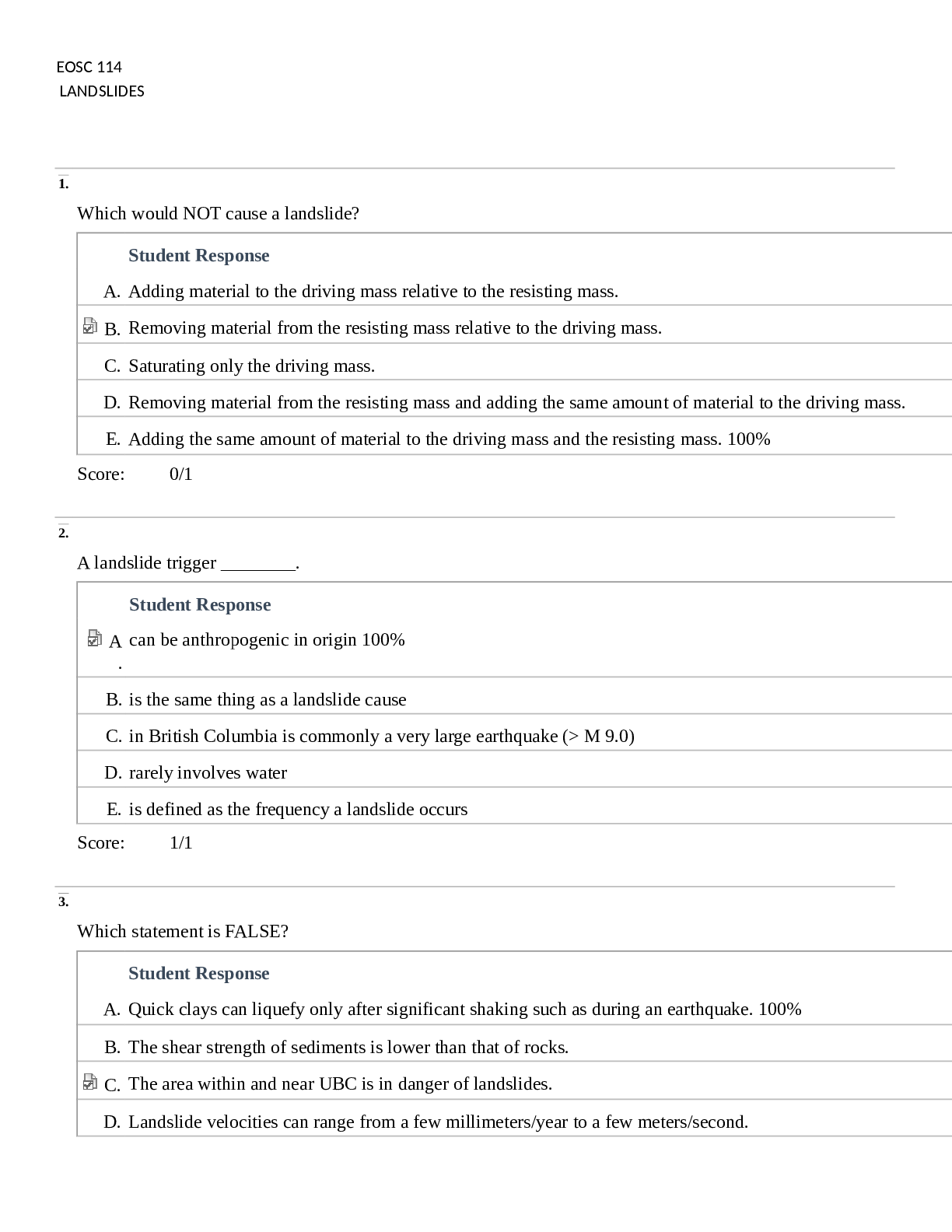
Reviews( 0 )
Document information
Connected school, study & course
About the document
Uploaded On
Dec 09, 2022
Number of pages
36
Written in
Additional information
This document has been written for:
Uploaded
Dec 09, 2022
Downloads
0
Views
44


.png)
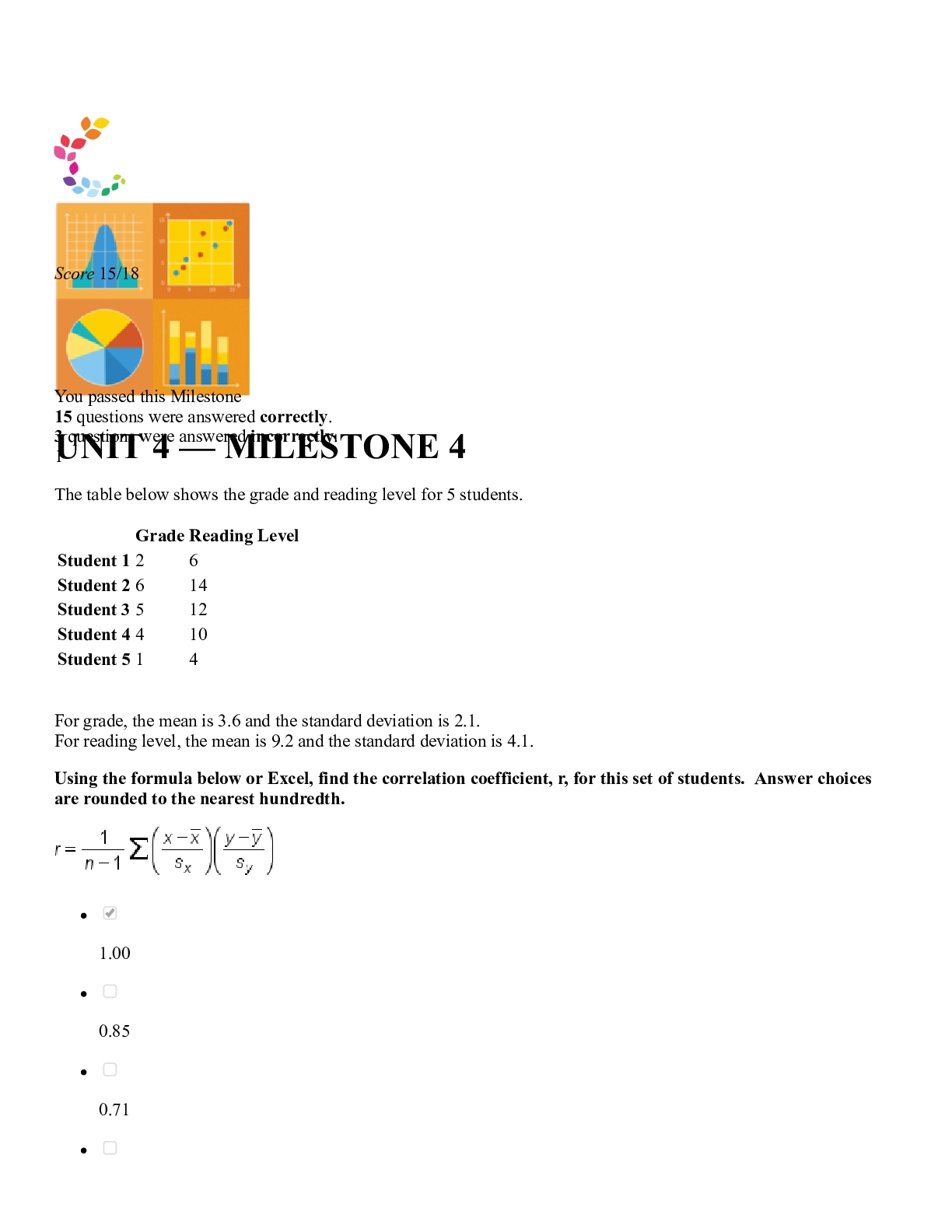

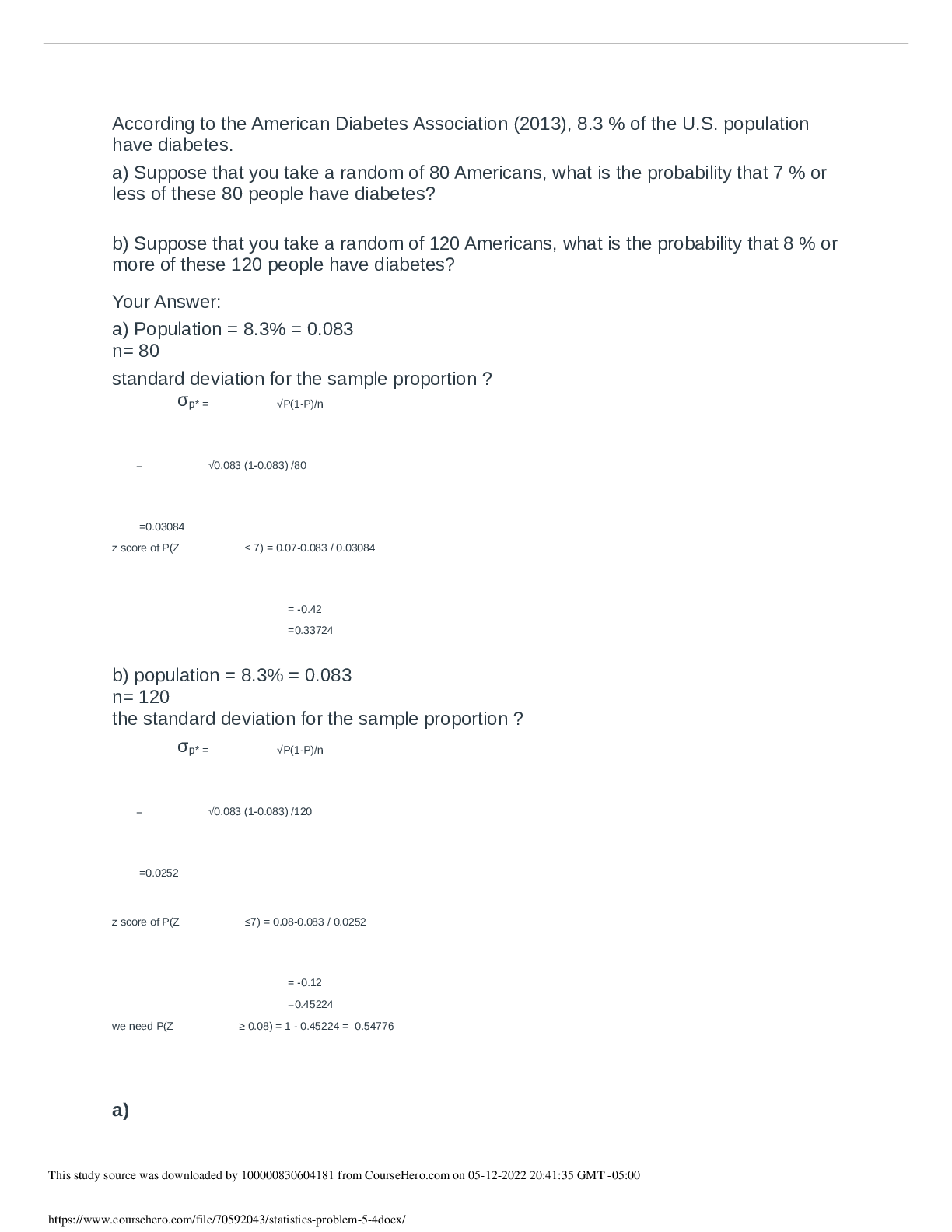
.png)
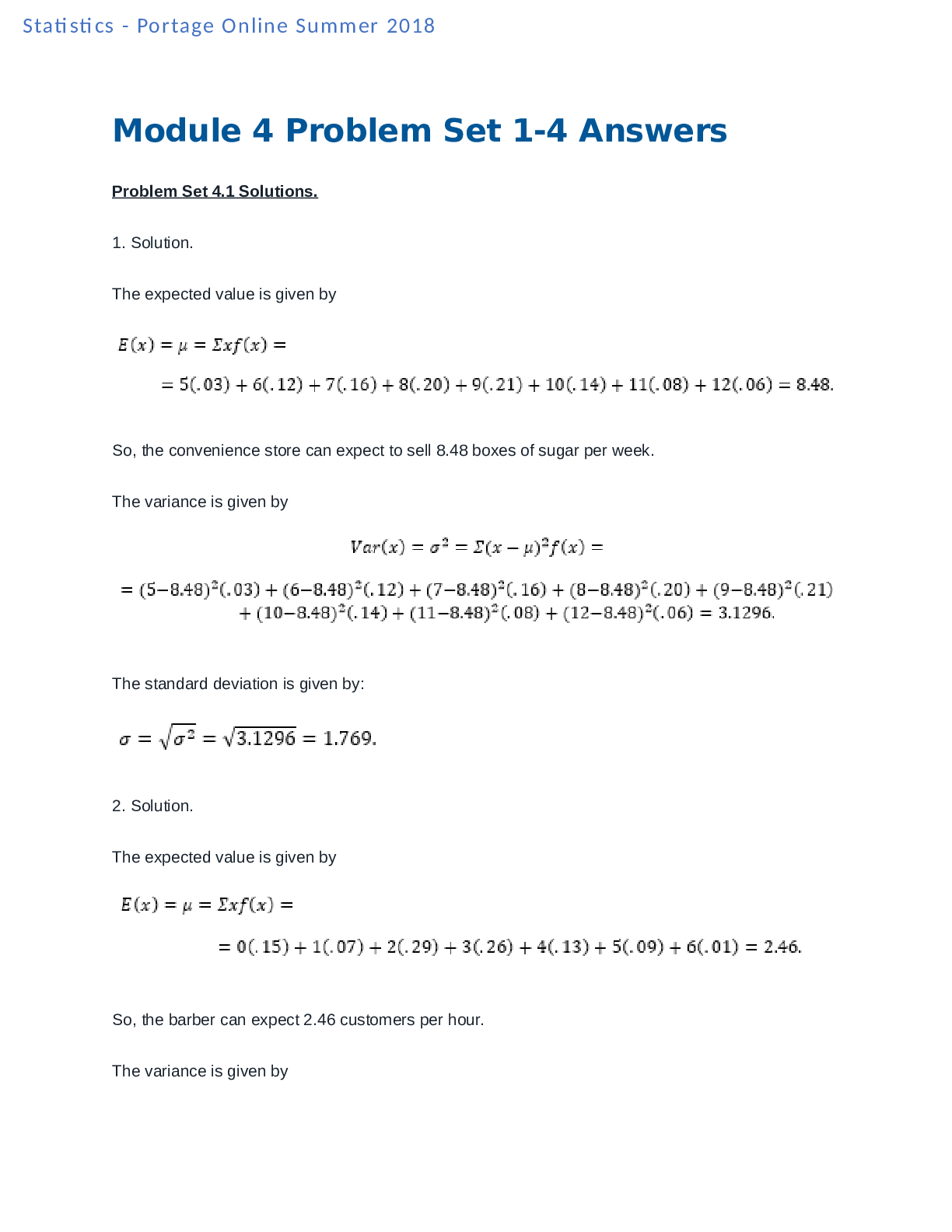

.png)
